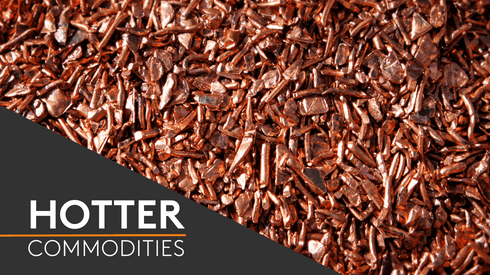After a week of turmoil, nose dives and downdrafts, Morgan Stanley analyst Tom Price has answered the key questions prevailing from last week’s “correction” in the markets.
The consensus last week was that the Chinese authorities’ efforts to halt an equity market slide had instead “spooked investor confidence”, prompting the market to lose $3.2 trillion of its value in less than a month. The metal markets responded to the turmoil, with copper trading at six-year lows and nickel losing nearly 9% of its value in a day.
“Hey, are we at the floor yet?”, Morgan Stanley’s Price asked in a note last week. “Yes we are,” he replied, as most markets (with the exception of copper) are reporting surpluses, companies are swiftly cutting their capex, and the number of markets with a spot price lower than the market clearing price (MCP) is increasing.
“[This] doesn’t make us overly bullish on short-term commodities demand/prices, though…we’ll probably have several more days/weeks of price weakness/volatility/uncertainty,” he added. Price notes that last week’s correction is part of a general metals selloff that began in mid-May, and could last up to 120 days, if previous correction events are anything to go by.
What are the chances of short- to medium-term catalysts? While catalysts have been proposed in the form of Chinese credit and a US capital-rebuild programme, or a “materials-intensive growth cycle” from Modi in India, Price was unconvinced.
“Short-term price recovery for most commodities will probably be delivered by a combination of excessive production/capex cuts vs. a modest demand-side recovery,” he said.
By Thursday, regulatory measures from the Chinese government appeared to be stemming the rout, and we saw some recovery in prices.
Price asked, “Is this just a dead cat bounce?” Most agreed that it was, calling the central government’s measures to support China’s equity markets “draconian and inadequate.”
So, what to do “when the market goes to custard”? Quality is key in the current environment, Price said, recommending the strong balance sheets of Rio Tinto, Antofagasta and Norsk Hydro.
And are commodities being dumped? Yes, it is likely they are. Some comments have suggested that iron ore and copper are being delivered to the market as participants cover their losses. “We don’t know how much material could be returned to the market, but it’s clearly a drag on prices,” the analyst said.
Nickel was hit particularly hard last week. “Poleaxed,” Price says, because of its dependence on the stainless steel market, where demand is weak, prices are low and inventory management is tight.
But for tactical traders, this leaves the alloying metal open to the strongest gains. “For sensible equity investors, you should wait for two things before re-engaging Nickel World: a recovery in stainless steel prices, and sustained draw down in LME inventories,” Price recommends.
And finally, “Will Australia win the Ashes?”, the Morgan Stanley analyst was asked.
“Yes, Australia will win the Ashes,” Price says, though perhaps he’s due a correction following England’s weekend victory.
Charlotte Radford
charlotte.radford@metalbulletin.com
Twitter: @CRadford_MB




